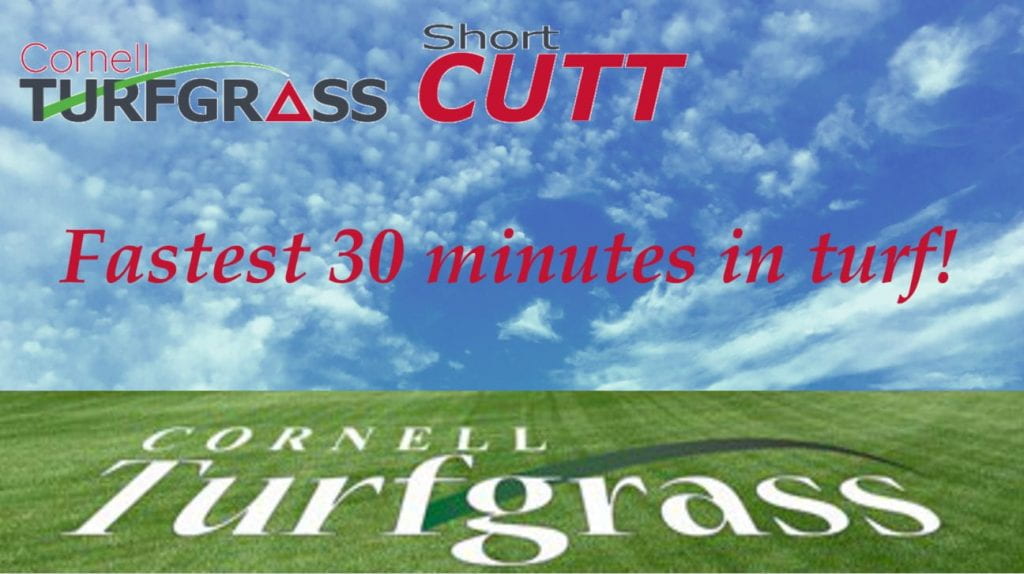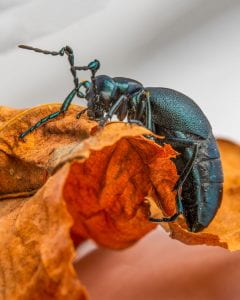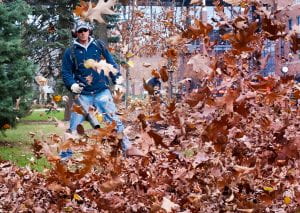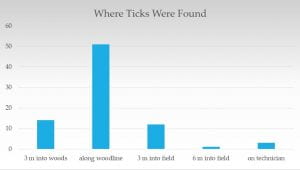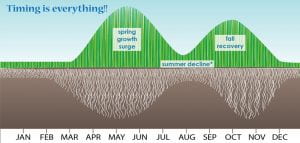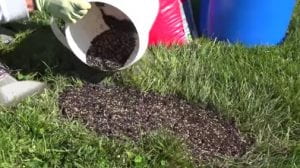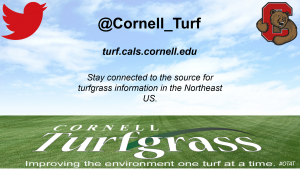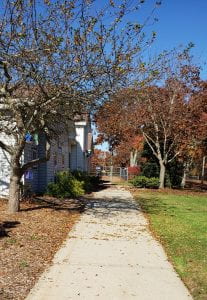
Walkway in front of the child care center
On a warm Long Island day in November (a warm week, to be accurate) I received a call from a BOCES* Health and Safety officer, who told me a local child care center was alarmed about a number of large black insects on the playground. The property manager and his staff had identified the bugs as oil beetles, also known as blister beetles, for a toxin they emit. Child care staff were worried about the hazard to their children, as kids can be curious and compelled to capture such a thing. I offered to visit after seeing a photograph of the bug in question: an oil beetle for sure. But why would they be on a playground?

A mulched playground and swing set

Oil beetle found in the mulch
Oil beetles belong to a broad group called blister beetles, so named for the secretion of a defensive toxin (cantharidin) that causes blisters. They are stout, flightless, dark-colored beetles that have a rather strange life cycle. Adult beetles awaken from winter and females lay large numbers of eggs in soil burrows. The eggs hatch into tiny larvae called triungulins, which move quickly and aggregate on the tips of grass and plant stems. From there the triungulins produce pheromones that attract male solitary bees. The male bees arrive, hoping for the reward of mating, and become a vehicle for the larvae who hitch a ride and travel with the male to find a female bee. He passes the larvae to the female bee who inadvertently brings them back to her burrow, where larvae and their provisions are located. Triungulins then feed on the larval food (pollen), then the larvae themselves. In the Northeast, the adult beetles emerge from bee burrows in late-summer and early-fall to mate.
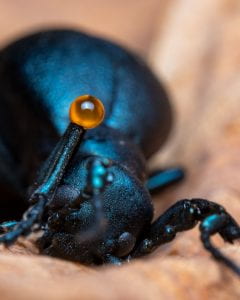
A droplet of hemolymph on a Meloe oil beetle, Peter Coffey (petercoffey.com)
So what does this have to do with a child care playground? My suspicion is as follows: Playgrounds, ball fields, office park grounds and college campuses are all places that end up with exposed sandy soils due to foot traffic and neglect. Many of the solitary bee species in the Northeast prefer nesting in dry, sandy soils like we find in these kinds of places. I have inspected a number of playgrounds with sand wasps (Bembix sp.), cellophane and digger bees – all of which are basically harmless. This playground with oil beetles had no sign of ground-nesting wasps or bees, but it is autumn and those insects are long gone, having completed their life cycle during the summer. My guess is that the oil beetles emerged from ground-nesting bee burrows on the property and are mating and preparing for winter.
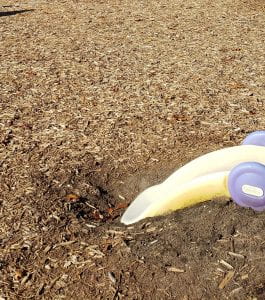
Bare soil on the playground attracts ground nesting bees.
If true, then how do we protect the kids from encountering blister-inducing beetles? New York State restricts the use of pesticides on school and child care playgrounds for good reason. So, non-toxic solutions are needed. The best approach is to create and maintain a barrier between the bees and exposed soil through the use of mulch and/or landscape cloth. In most places the mulch on this playground is deep enough to be spongy. However, there were bumps of exposed soil, especially around a small slide, on which a number of beetles were actually found! Digging up the soil, laying a piece of landscape fabric and replacing the soil to four inches deep can prevent bee nesting, and hopefully, oil beetle congregations.
To confirm my suspicions about this scenario, I plan to visit the child care center next spring to note spring bee activity and to make recommendations if needed. Is there risk to the children from any of these insects? Yes, we don’t want little ones picking up toxic beetles. Ground-nesting bees have stingers, even if they are not known to use them. So there’s always a little risk when it comes to being outdoors. But being outdoors is necessary for children’s health. An integrated pest management approach, in this case reducing nesting habitat for the host species, will minimize risks from these insects.
*Board of Cooperative Educational Services.



